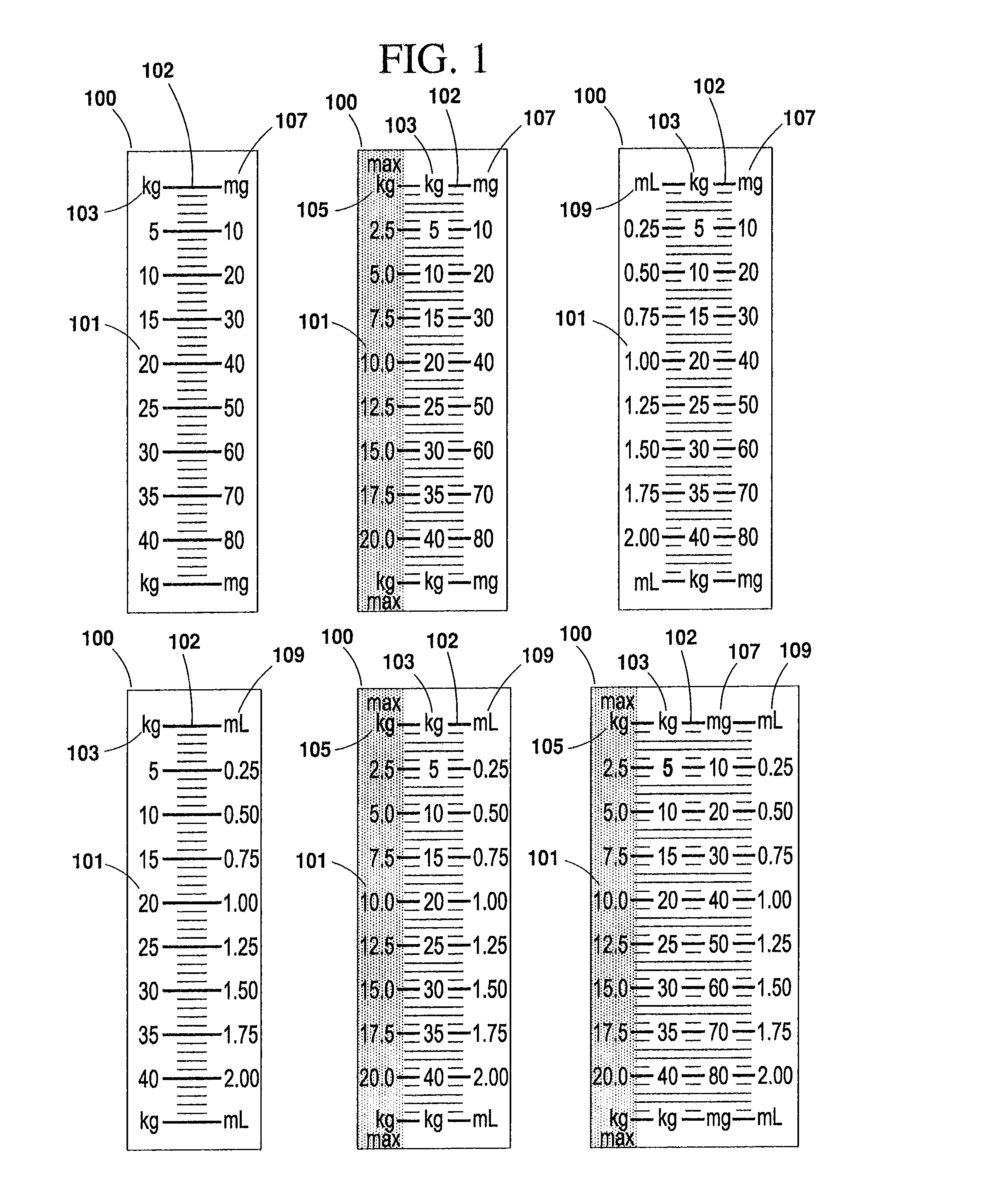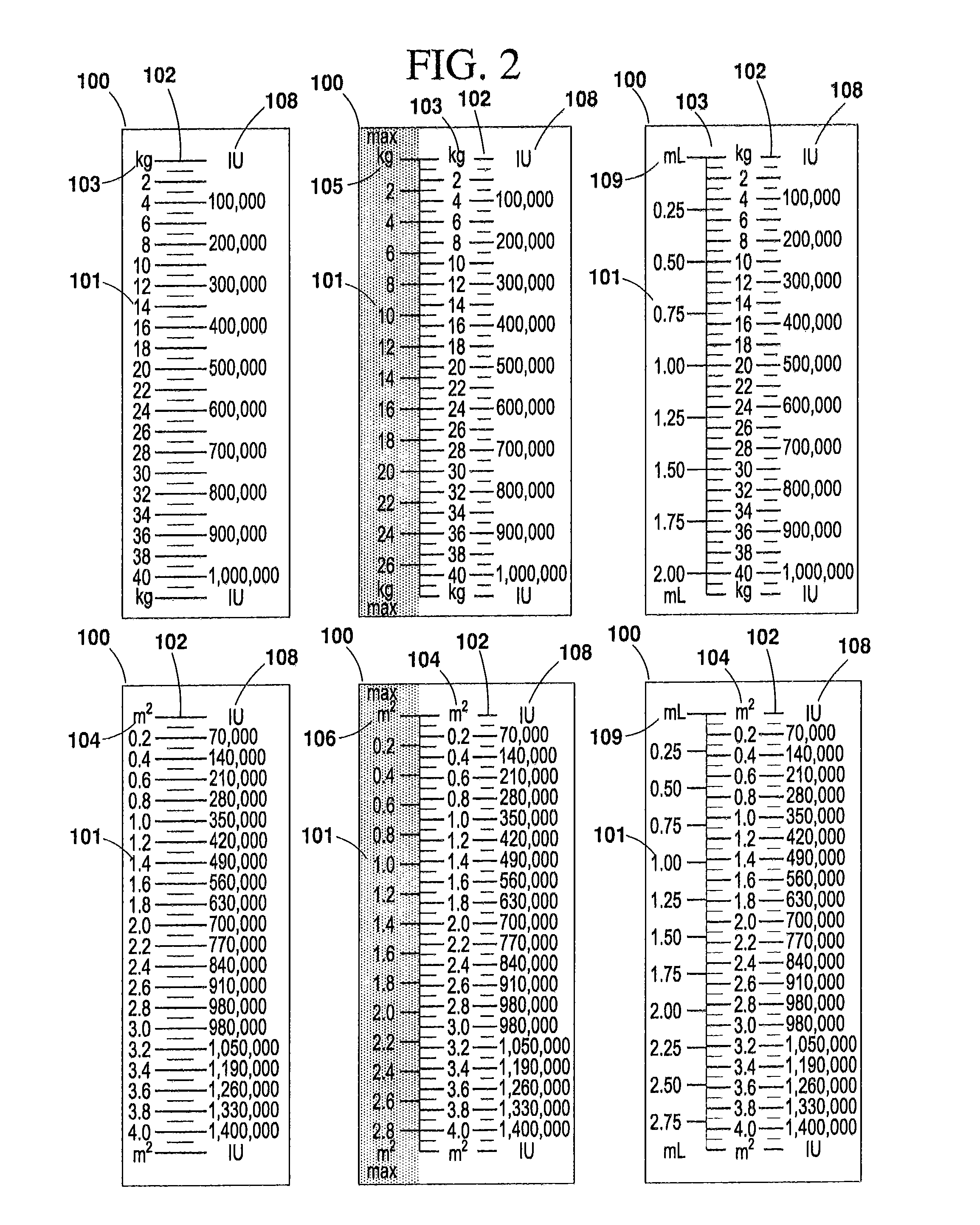Safety syringe and safety dose combination kit
a safety dose and syringe technology, applied in the field of safety syringe and safety dose combination kit, can solve the problems of ineffective treatment of the underlying condition, adverse reactions, illness, death, etc., and achieve the effect of reducing incremental calibration doses, improving visibility, and improving accuracy
- Summary
- Abstract
- Description
- Claims
- Application Information
AI Technical Summary
Benefits of technology
Problems solved by technology
Method used
Image
Examples
Embodiment Construction
[0042]According to one embodiment of the present invention, a syringe or other apparatus for medicinal administration (hereinafter referred to as a “syringe”) may be designed for use with a specific medication. The syringe is preferably clearly and conspicuously labeled to indicate the name of the medication it is intended to administer. In one preferred embodiment, the syringe bears a calibration scale on one or more of its barrel, its plunger, or other component that is marked in indicia of a patient characteristic, such as, for example, patient weight or body surface area (BSA, measured as m2). This enables the user to administer a manufacturer's recommended dosage of a subject medication, for example, strictly according to a patient's weight, or other desired characteristic, without performing any mathematical calculations, computations or correlations, etc. (See FIG.5, feature 400).
[0043]The syringe's indicia may also provide a maximum calibrated column that correlates to the m...
PUM
 Login to View More
Login to View More Abstract
Description
Claims
Application Information
 Login to View More
Login to View More - R&D
- Intellectual Property
- Life Sciences
- Materials
- Tech Scout
- Unparalleled Data Quality
- Higher Quality Content
- 60% Fewer Hallucinations
Browse by: Latest US Patents, China's latest patents, Technical Efficacy Thesaurus, Application Domain, Technology Topic, Popular Technical Reports.
© 2025 PatSnap. All rights reserved.Legal|Privacy policy|Modern Slavery Act Transparency Statement|Sitemap|About US| Contact US: help@patsnap.com



